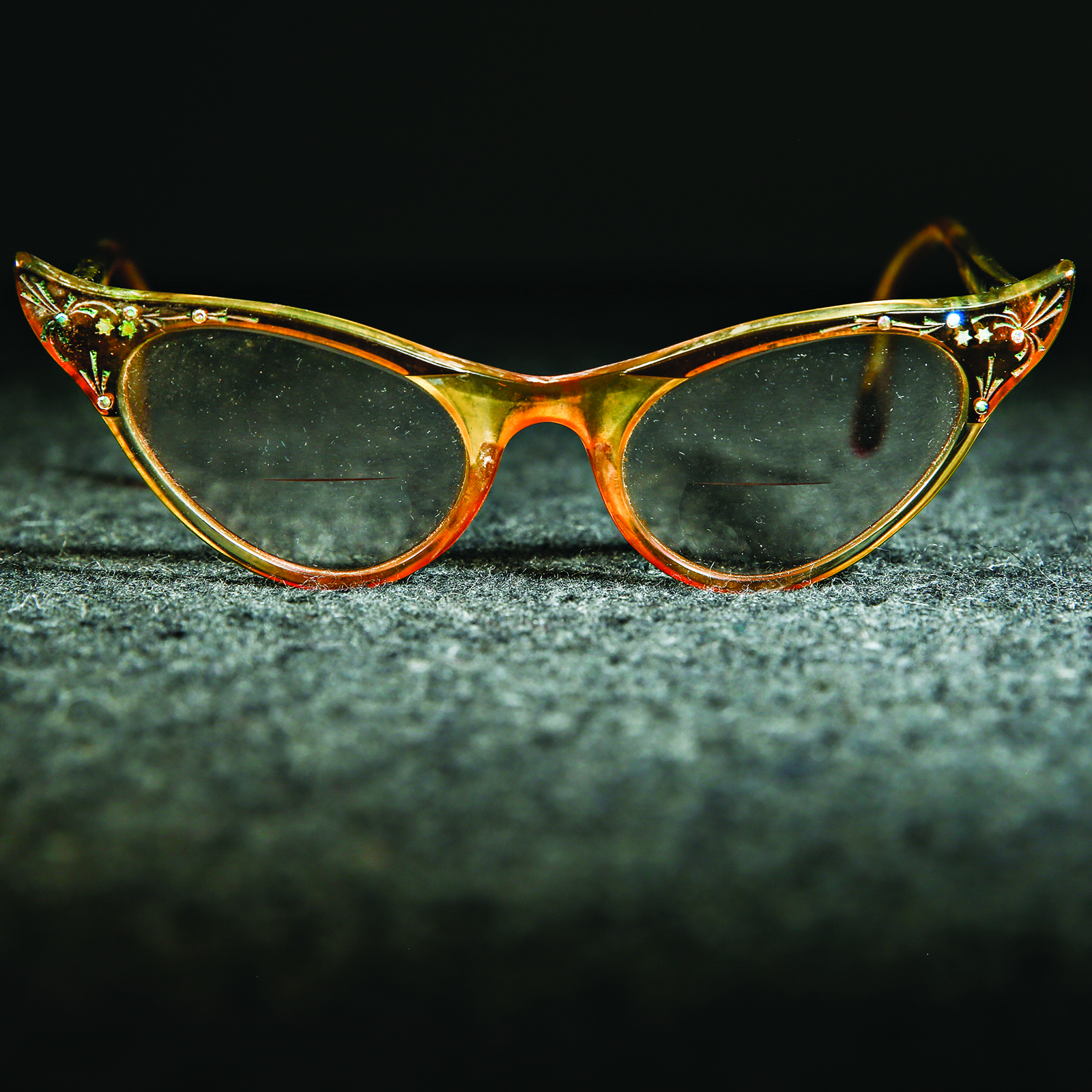For 16 years, Glessie “Mabel” Lydston would walk the quarter-mile trek from her pink, two-bedroom house on top of Sugar Hill to downtown Martin City on Central Avenue, sporting men’s work boots and, in her later years, black cat-eye reading glasses.
During her days in Martin City, from the late 1940s to the early 1960s, Mabel never drove. If she had business outside of town, she’d hire a driver. Every Christmas, she’d rent the entire movie theater so every kid in town could see a free movie and visit Santa Claus. She sponsored the local kids’ baseball team and bought their uniforms. She donated money to numerous agencies and people in need. She frequented the Deerlick Tavern (now the Deerlick Saloon), The Mint and the many bars at the time in Martin City, Coram and Hungry Horse, and she was known to regularly buy the bar a round of drinks.
These are among the memories that old-timers in Martin City have of Mabel, a businesswoman, philanthropist and madam who was well-known as both the town’s brothel operator and as a highly respected community leader during the Hungry Horse Dam boom days.
Behind her modest house on Sugar Hill stood a narrow structure with an entertainment room, a bar and a short hallway with two rooms on either side known as the Sugar Hill Rooms. She hired various women over the years to work the rooms, and it’s rumored the neighboring creeks are named after the girls.
Those who remember Mabel say they’ve never heard a bad word uttered about her. But while her reputation as a “wonderful lady” is undisputed, her life prior to the Hungry Horse Dam days has historically been a mystery.
Like most of Martin City’s inhabitants during the dam days, Mabel was drawn to the boomtown by its potential economic prosperity. With no memory of her mother, multiple marriages and several relocations across the country, Mabel’s early biography hints at a troubled past before finding a place to call home in Bad Rock Canyon.
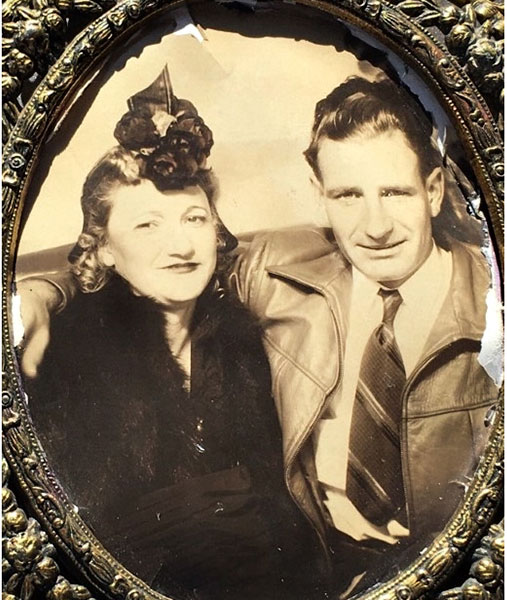
Glessie “Mabel” Davidson was born in 1900 in the Appalachian Mountains of Tennessee to a mother who died when Mabel was only 2, according to research compiled by Ron Bevz, a long-time Bad Rock Canyon resident. She lived with her father and uncle until she was 13, before marrying 22-year-old Henry Hickman in Rogersville. In an intimate ceremony, attended only by the bride, groom and the reverend, Mabel and Hickman were legally married.
After a short stint in the South, the couple traveled to Emmett, Idaho, where Lydston gave birth to a daughter at age 17. But due to a premature labor at eight months, her newborn died only two hours after birth, according to her death certificate.
Sometime in the following three years, Mabel and Hickman moved 30 miles south to Nampa, according to U.S. Census data, where they moved in with Mabel’s sister in southwest Idaho.
Mabel and Hickman divorced in 1920 after seven years of marriage. Both departed Idaho, with Mabel heading west to Washington and Hickman heading east to Illinois, where he remarried and operated a saloon. He would never reappear in her life.
Meanwhile, Mabel resettled in in Colfax, south of Spokane. She met a new suitor upon arriving in the arid climate of Eastern Washington and married 26-year-old Charles “Griff” Lydston, a barber from Midvale, Idaho, on May 22, 1925, just six days after her 25th birthday. In a rush to get hitched, the couple traveled to La Grande, Oregon, where there was no waiting period.
The newlyweds moved just across the state line to Lewistown, Idaho, and only four months after their marriage, Lydston stole $913 and an automobile from his wife and headed for Portland, where he was arrested for robbery, according to The Spokesman-Review.
Five years later, the 1930 Census reported the Lydstons living in Nyssa, Oregon. At some point in their marriage, they invested in the Pioneer Hotel in Spokane, and Mabel later sued her husband for divorce and was awarded the hotel’s title after she testified that Lydston abandoned her in 1940, according to The Spokesman-Review.
It’s uncertain what Mabel did in the next few years, but she applied for a Social Security card in Walla Walla, Washington in 1947, shortly before joining the dam boom migration to Montana.
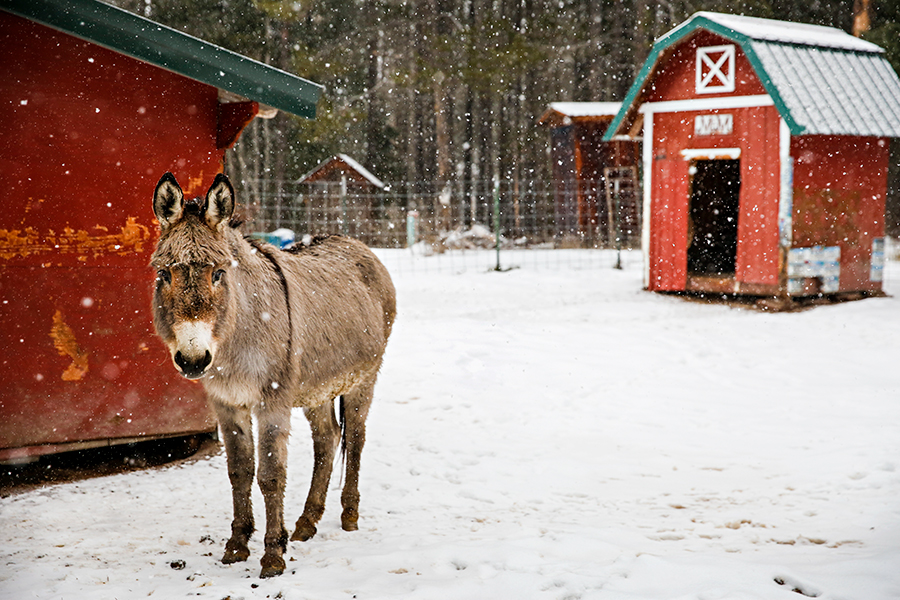
On July 10, 1948, Montana Gov. Sam Ford ignited the first dynamite blast that signaled the start of the Hungry Horse Dam’s construction. Over the next five years, this heavily timbered area in Flathead National Forest would transform into a 3.5 million-acre-feet reservoir formed by a dam measuring 2,100 feet long, 500 feet high and costing $100 million to build.
Thousands of people flocked to Bad Rock Canyon southwest of Glacier National Park in search of work after learning about the dam’s construction and its vast employment opportunity. Many of the prospective workers were World War II veterans hopeful for economic opportunity in a time of peace following the war. Some came as early as 1946, two years before construction officially began, and boomtowns began to sprout seemingly overnight near the dam site. The surrounding land soon became the towns of Hungry Horse, Coram and Martin City. By 1950, Martin City was home to 1,000 people, according to Flathead National Forest data.
In the mid-1940s, landowner Adolf Martin was in the midst of selling his 160-acre plot now known as Martin City, which he acquired in 1920. He divvied up the plots to entrepreneurs, which eventually became popular businesses, including Byrd’s Grocery, Lund’s General Store, the Deerlick Tavern and several other bars. He sold a 1-acre plot of land to Martin City residents Vernon and Nettie Greene atop what’s now known as Sugar Hill.
Meanwhile, Mabel opened a bank account in Columbia Falls with $12,659 in it in March 1948. She began renting the Greenes’ property for $30 a month, which she would eventually buy, and she purchased high-quality furniture from Whitefish and Kalispell. Soon, a structure with a stage, bar, dance floor and four rooms emerged. The Sugar Hill Rooms were open for business.
Mabel’s business boomed with the rest of the area’s establishments, and she even expanded her brothel business to Troy in preparation for the Libby Dam’s construction in 1951. While she was widely known and respected in Martin City, she led a private life and ensured that her girls held that same right to privacy. They were given routine doctor visits, and old-timers say Mabel insisted they act “lady-like” in public.
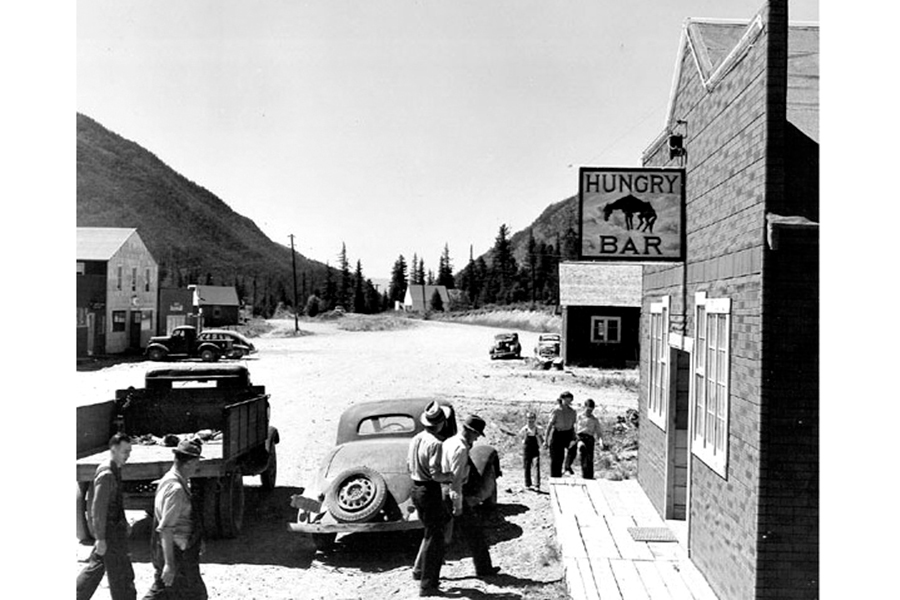
As a kid, Judy Powell, 71, remembers the girls were well-liked in town and that they knitted scarves for the kids in the canyon. While Powell didn’t know Mabel on a personal level, she remembers delivering newspapers to her spotless house on Sugar Hill as a kid. She said Mabel often gave her extra money for her newspapers.
“We all thought the world of her,” Powell said. “As a kid, you didn’t know it was anything.”
Mabel’s business flourished during the dam days, but the boom ended in 1953 after the Hungry Horse Dam was completed. People left the area in search of new work, buildings burned to the ground and businesses began to dwindle, including Mabel’s.
In the late 1950s, her past began to reemerge in her life. Her ex-husband, Lydston, moved to Great Falls in 1958 and was diagnosed with prostate cancer. Mabel financially supported him through their final years. In 1959, Mabel was robbed of $160 at gunpoint and tied up in Martin City, according to The Spokesman-Review.
Eventually, the brothel fizzled and the Sugar Hill Rooms became rentals only.
On February 23, 1964, Mabel died suddenly of cerebral hemorrhaging caused by hypertension at the hospital in Whitefish, according to her death certificate. She was 63 years old.
Mabel was buried in an unmarked grave at Conrad Memorial Cemetery in Kalispell in a three-grave plot alongside William and Rose Anna Smith after Rose Anna’s sister, Helen, requested she be buried next to the Smiths in the unused grave, according to historical cemetery records. The relationship between Helen and Mabel is unclear.
Leaving no spouse behind, Mabel left behind her sister, and a niece in California, to whom she left her belongings. According to a decree of distribution, she left her household items, property in Martin City and Troy, silver stocks, which had no value, and $4,979.
The house on Sugar Hill was sold in 1967 for $4,000, three years after Mabel’s death, and purchased by Martin City residents Jackson and Judy Johnson, who still live there today.
Judy remembers that the pink house was completely furnished and equipped with a vacuum cleaner and kitchenware. She says it had been broken into several times over the years. There was a picture of Jesus walking on water, and the unpainted ceiling had light bulbs without the fixtures. The Johnsons found a box of Mabel’s personal belongings, which included her reading glasses and canceled checks to places like the sheriff’s association. There were also photographs, which were lost after Judy lent them out to be photocopied but were never returned.
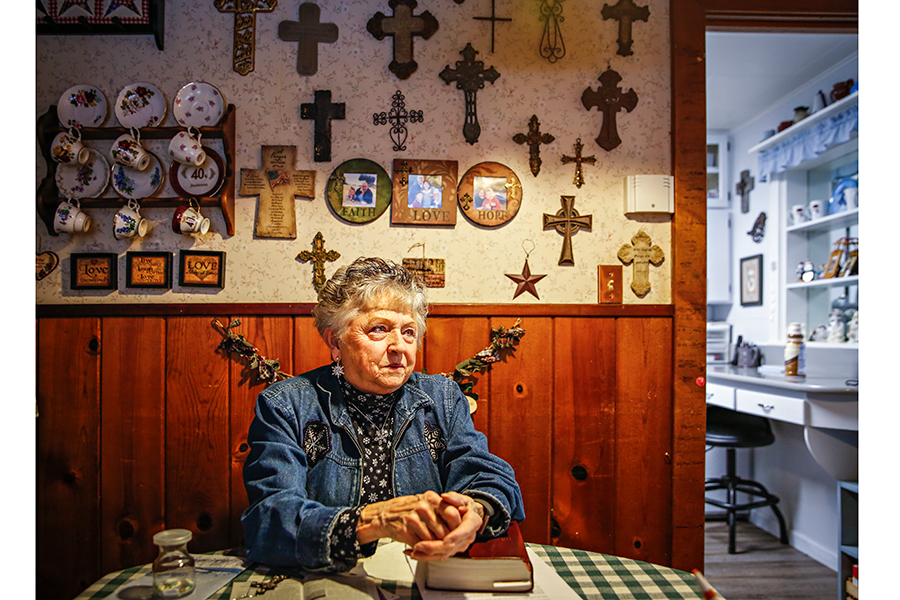
Shortly after moving in, the Johnsons were forced to burn down the Sugar Hill Rooms due to a leaking roof and a warped, dilapidated structure. Their garage now sits where the former brothel once did, and until recently, when Judy replaced her kitchen countertops, there was a drawer with a key lock and a money slot in Mabel’s home.
Judy, 74, raised her two sons and ran her dog-grooming business at the Sugar Hill home for 50 years until she retired just a few years ago.
“When I became a dog groomer, my dad said, ‘It used to be a cathouse, now it’s a doghouse,” Judy said.
Since the house had been broken into so many times, Judy says the lock didn’t work, so they kept it closed with a knife slid in the door crack. She remembers a knock on the door late one dark night. She took the knife out of the door in the darkness and heard a deep, monotone voice.
“Are there any girls around here?” the voice asked.
After informing the man that the house was now a private residence, she later learned that he had an artificial larynx, altering his voice.
The Johnsons had a few instances like this over the years, including a drunk man from West Glacier who was looking for some fun before heading to the Peace Corps and proceeded to get his car stuck after leaving the house disappointed. She says the men kept coming even years after Mabel had died.
“I’ve had so many men say to me, ‘I’ve been to your house, but just to visit,’” Judy said.
Judy, who was a little girl when Mabel was around, says everybody in town who’s ever known the madam of Martin City has called her a wonderful lady.
“I don’t think you’d ever talk to anybody that would ever say anything bad about her,” she said. “She was very generous to the town and to anybody who was down and out.”
Today, Sugar Hill is known for its famous Martin City Barstool Ski Races, where people converge annually to ride on barstools attached to skis during Bad Rock Canyon’s Cabin Fever Days.
What was once home to a brothel, at least 10 bars, a movie theater and several other establishments is now mostly remnants. Only two local watering holes, the Deerlick Saloon and the South Fork Saloon, occupy the once wild boomtown of Martin City.
But as the old-timers age and memories of those early Hungry Horse Dam days fade away, she remains a subject of conversation in the now sleepy town of Martin City, and her legacy as a community matriarch lives on in Bad Rock Canyon.
A special thanks to Ron Bevz, whose extensive research into Mabel’s life greatly contributed to this story.
